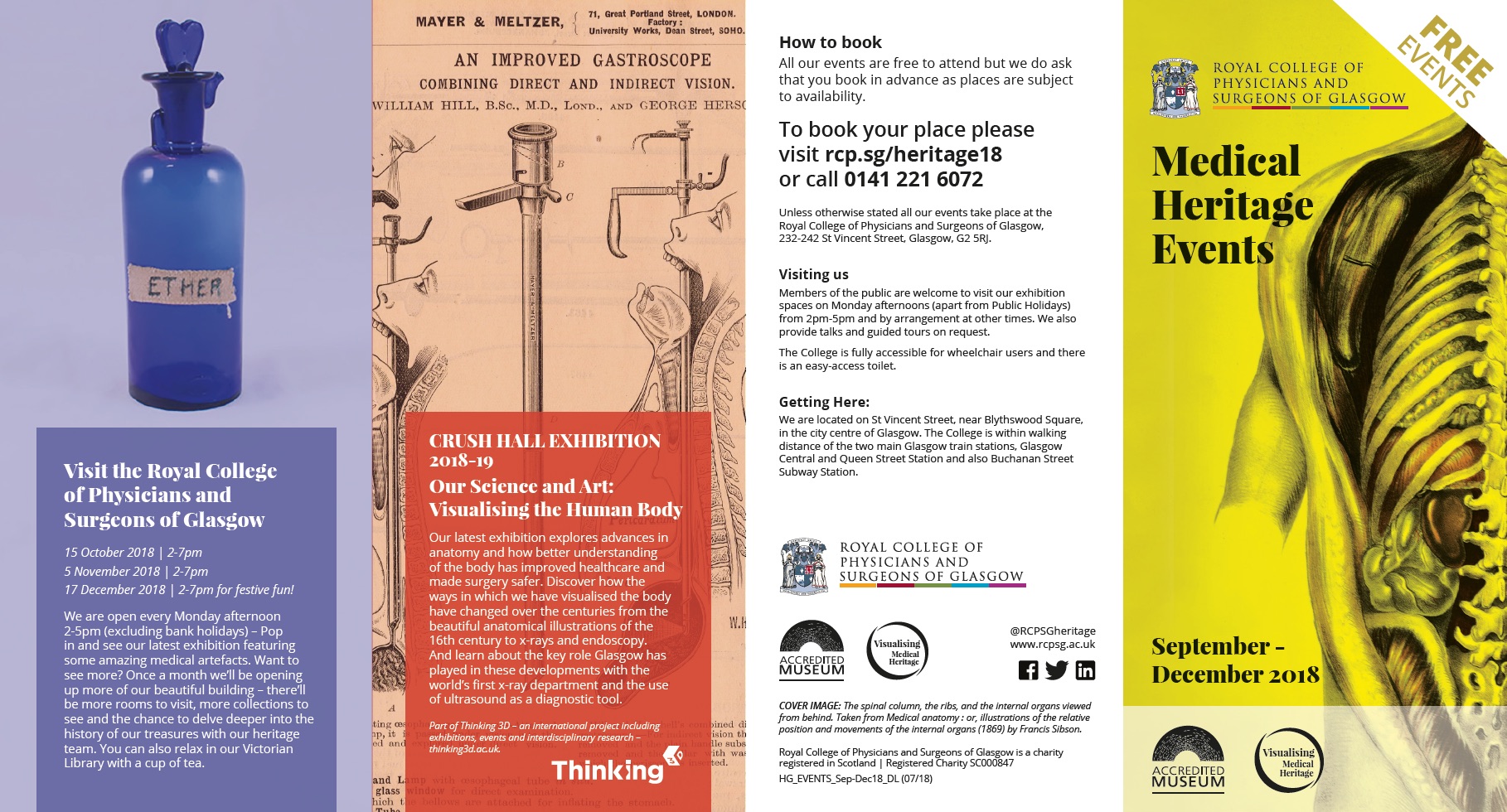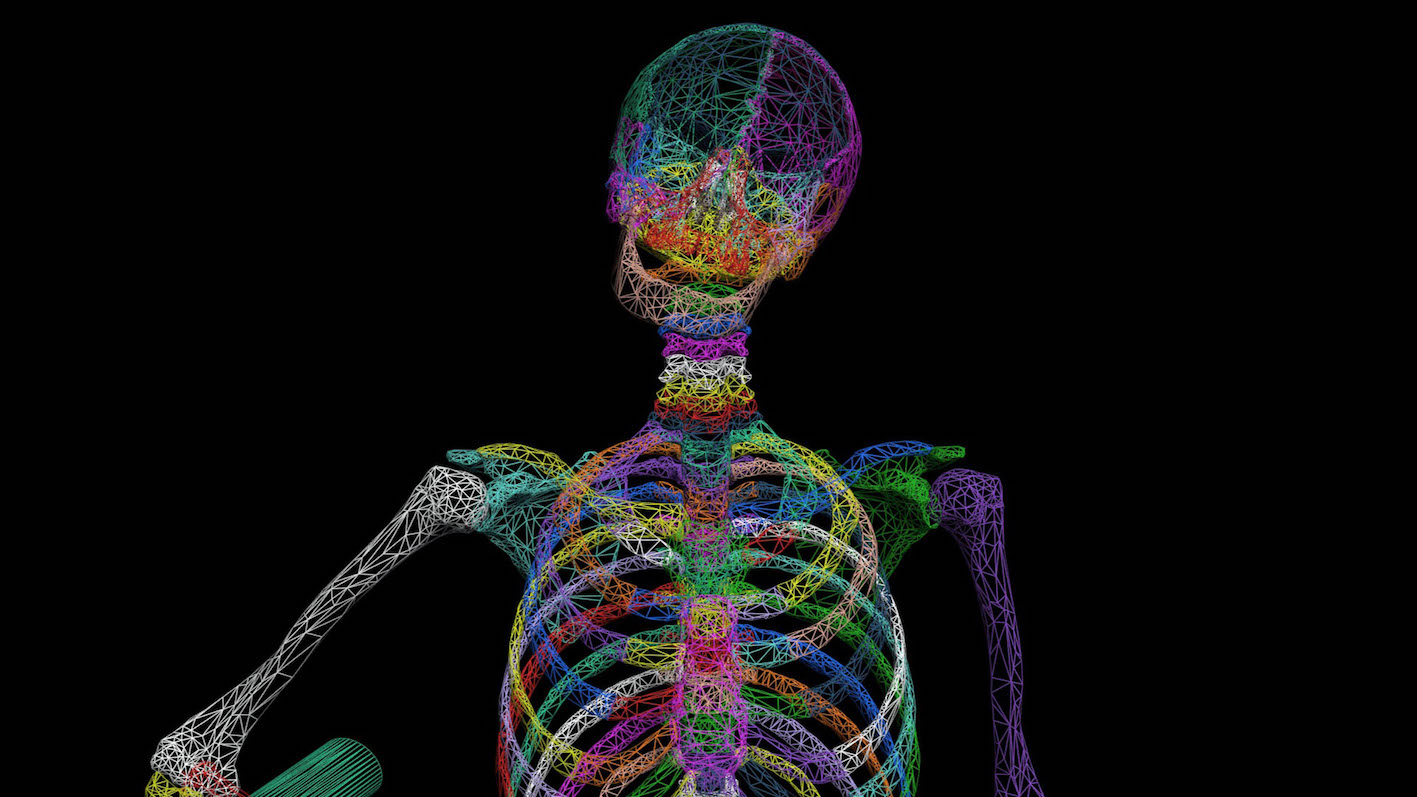Our Science and Art: Visualising the Human Body

The exhibition at the Royal College of Physicians and Surgeons of Glasgow draws on material from across the College’s heritage collections, and stretches from the 16th century to the present day. It begins with a selection of printed anatomy books, demonstrating how the processes for reproducing illustrations developed over the course of several centuries. Developments in reproduction techniques – from woodcuts, to intaglio printing, to lithography – allowed for finer detail on the page, thus enabling the artists behind these anatomical illustrations to more fully represent the three-dimensional nature of the human body, both inside and out.
Several different endoscopes from the College’s museum collection are also on display. Endoscopy has its roots in the “lichtleiter” – a light-guiding instrument – developed in 1805 by physician Phillip Bozzini. Using candlelight, mirrors and different specula for the interior canal or organ being examined, this instrument paved the way for the future development of endoscopy. The ability to see inside the living body, for investigation, diagnosis and treatment led to many improvements in medical care. This technology has evolved with fibre-optics, keyhole surgery, and virtual-reality simulation for clinical skills training.
Glasgow has a proud history as a centre of medical innovation in the 19th and 20th centuries, and this exhibition showcases two notable Glaswegian contributions to medical imaging. Glasgow Royal Infirmary was home to the world’s first X-ray department for patients, established by John Macintyre, who recognised the potential of X-rays as a diagnostic tool. The department opened in 1896, just 4 months after the discovery of X-rays by physicist, Wilhelm Roentgen. In the 1950s, obstetrician Ian Donald and engineer Tom Brown developed the first ultrasound machine for medical diagnosis, using sound waves to produce images of the inside of the body. Today, ultrasound imaging is considered fundamental to antenatal care, and provides physicians and patients with a detailed 3D rendering of the unborn baby.
The exhibition will also feature some work from the ongoing “Visualising Medical Heritage” project. 3D visualisation and augmented reality will help to bring the collections to life and to demonstrate exactly how some of these pioneering pieces of technology actually worked.

Download exhibition guide.
Royal College of Physicians and Surgeons of Glasgow, 232-242 St Vincent Street, Glasgow, G2 5RJ.
Located in the city centre of Glasgow, within walking distance of the two main Glasgow train stations, Glasgow Central and Queen Street Station and also Buchanan Street Subway Station.
Open on Monday afternoons, 2pm-5pm and at other times by appointment (email library@rcpsg.ac.uk or telephone 0141 221 6072). The Royal College of Physicians and Surgeons of Glasgow participates in the Glasgow Doors Open Days Festival on Sunday 16 September 2018, 10am-4pm
